'Doctor Who' Gallery: The Evolution of Dalek Design
(Photo: BBC)
The creation of the Dalek design has two mythologies: the one within the reality of Doctor Who that sees despotic inventor Davros taking his own wheelchair and adding weaponry, a helmet and an eyestalk, and the one within the reality of, well, reality. In that version, designer Ray Cusick illustrated how Daleks should glide along the floor using a pepperpot, and that gave rise to the idea that he just took half a cruet set and added a gun and a sink plunger.
What’s remarkable is that both mythologies acknowledge the birth of a true design classic. These talking tanks are horrifying. They were horrifying then and they’re horrifying now, which is why this year’s New Year special “Revolution of the Daleks” – in which they have undergone an electric blue facelift – is so exciting.
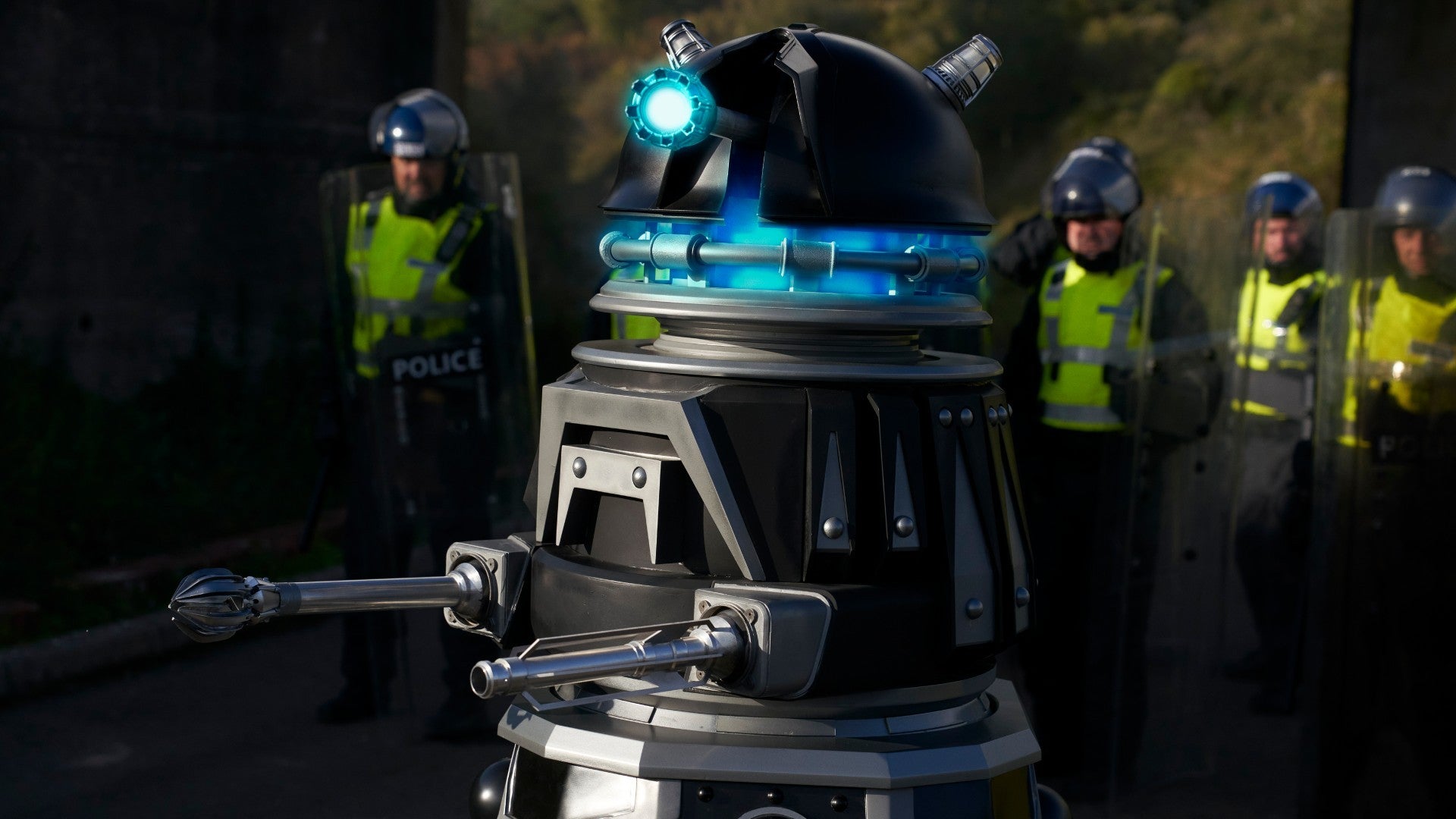 (Photo: BBC)
(Photo: BBC)
Before their latest iteration is unveiled on Friday at 8pm EST on BBC America, join us on a photographic exploration of how we got from there to here, starting at the very beginning.
The Daleks – Original Edition
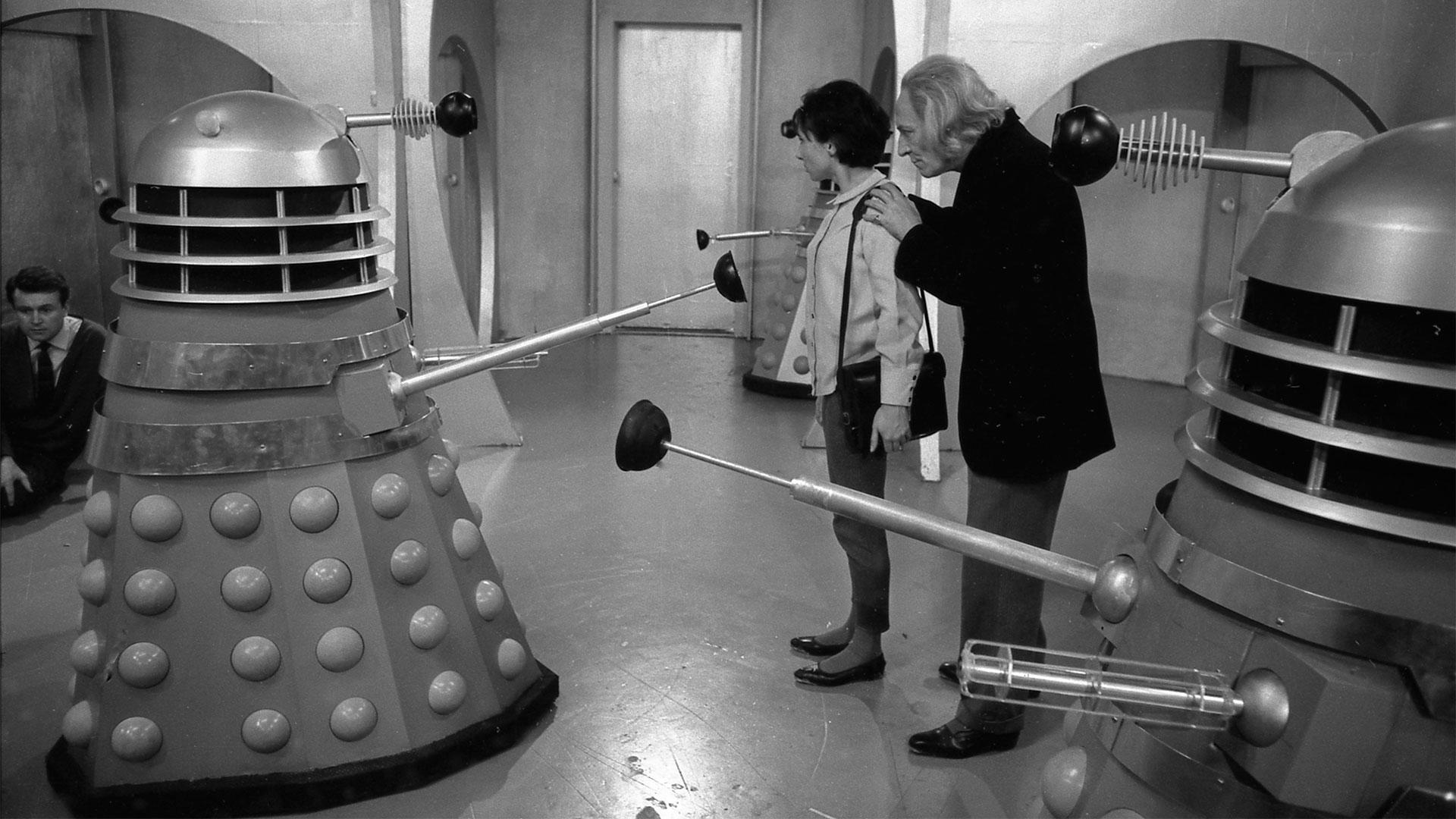 (Photo: BBC)
(Photo: BBC)
A big part of the original Dalek story was the fact that the rotten swine from Skaro were unable to leave their compound because they drew their power up through the floor using static electricity. That’s why the base of their tank-like exterior shells is so broad. Well, that plus the need for a low center of gravity.
The fascinating thing about the original Dalek design is that the decisions mostly made just for TV reasons – the glowing 'eyes' when they talk, the mesh area under the ‘head’ so that the operators can see where they’re going – work so well within the reality of the story. It must be hard for Daleks to tell who is talking, especially with their lack of depth perception. And they must need to breathe, right?
The Daleks – Mark 2
 (Photo: BBC)
(Photo: BBC)
When the Daleks took over London in “The Dalek Invasion of Earth,” designers had to face a key problem: the castors they originally rolled around on were too small for outdoor use. So the production team replaced them with bigger wheels, which required a larger pelmet around the bottom of the Dalek skirts to hide them. To explain how Daleks could suddenly get out and about, they also added a satellite dish at the back, so that it looked like the Daleks could pick up power from a transmitter far away.
They also developed the ability to swim (what happened to static electricity?) and started to demonstrate a command hierarchy based on color, which must have required a re-spray every time a Dalek soldier got promoted.
The Daleks – Mark 3
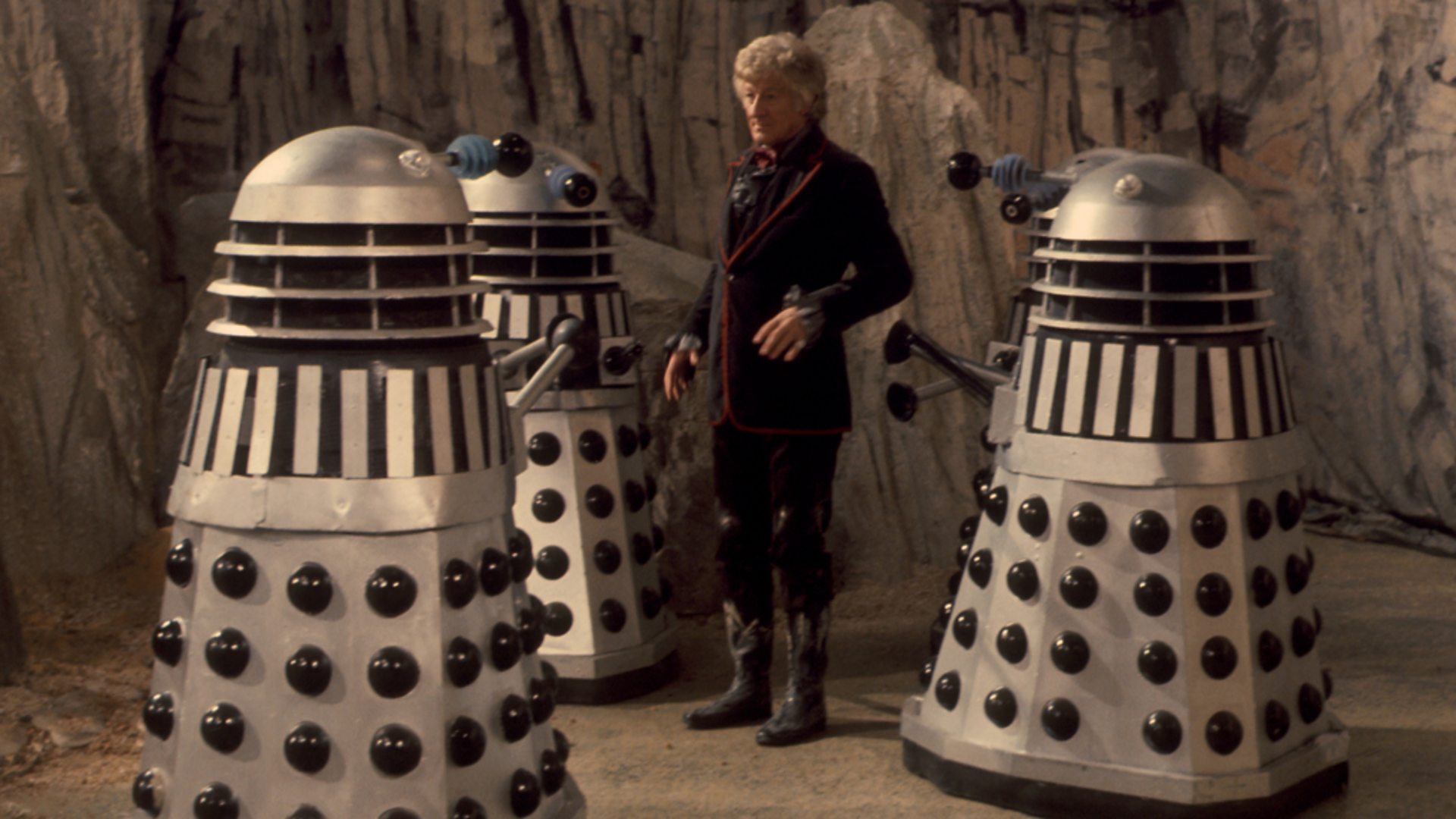 (Photo: BBC)
(Photo: BBC)
This design dominates classic Doctor Who, changing little over the next sixteen years. It’s particularly notable that while television may have made the transition from monochrome to color, the Daleks largely refused (apart from a slash of fire around the 'eyes' and a few colored plastic circles around the eyestalk). This design sees the introduction of a midsection with vertical stripes – very slimming – and a slight reduction in the pelmet area so they looked less like they were wearing wellington boots.
The Daleks – Mark 3 (Battleship Version)
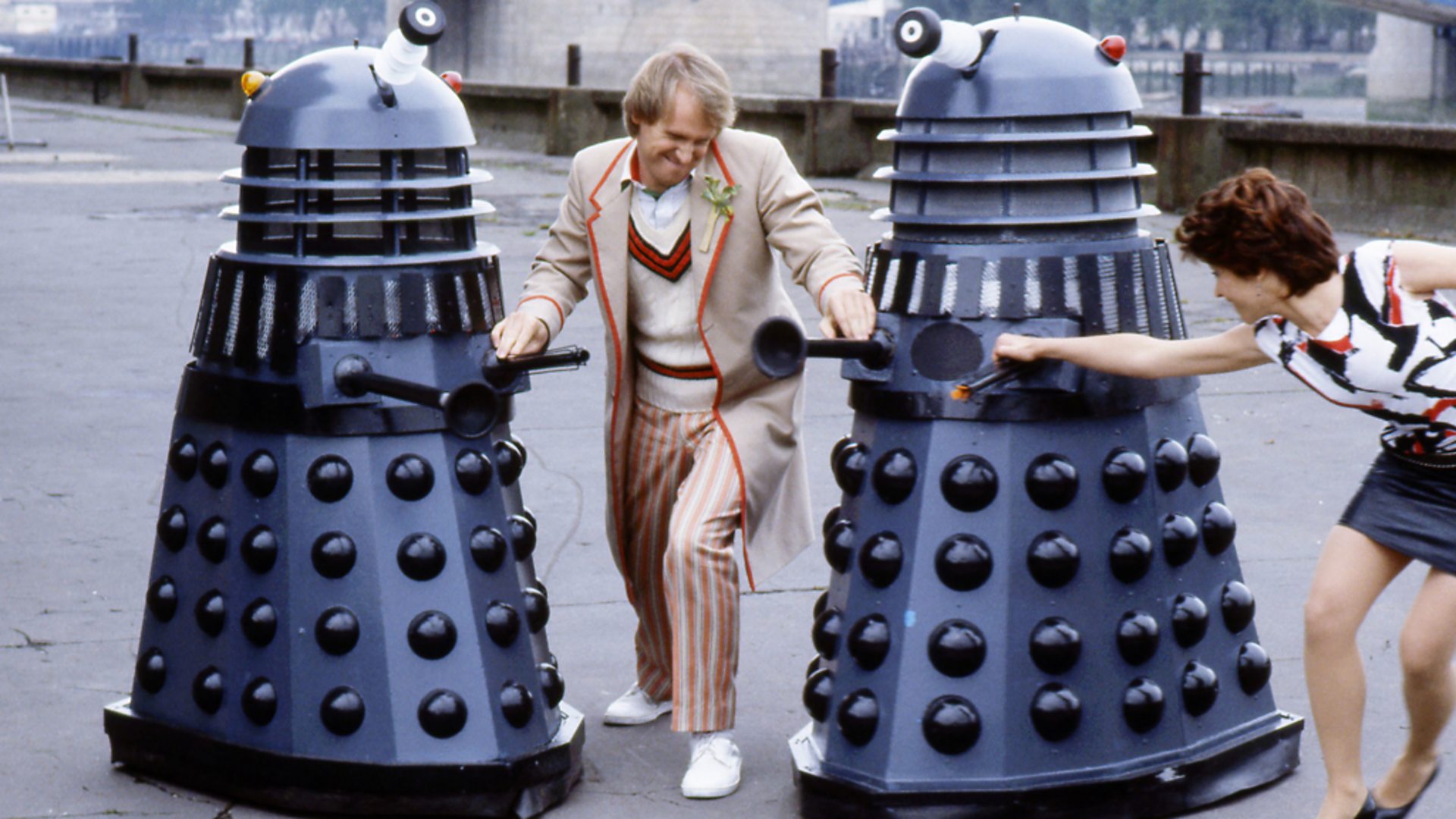 (Photo: BBC)
(Photo: BBC)
Of all the Dalek color schemes in the classic series, this one is arguably the most effective, as the silver gives way to military grey and the Daleks take on a drab, utilitarian hue. Even the discs on their eyestalk have become uniform and white. Only the burnished bronze of the Time War-era Daleks ever made them look more brutal.
Necros Daleks
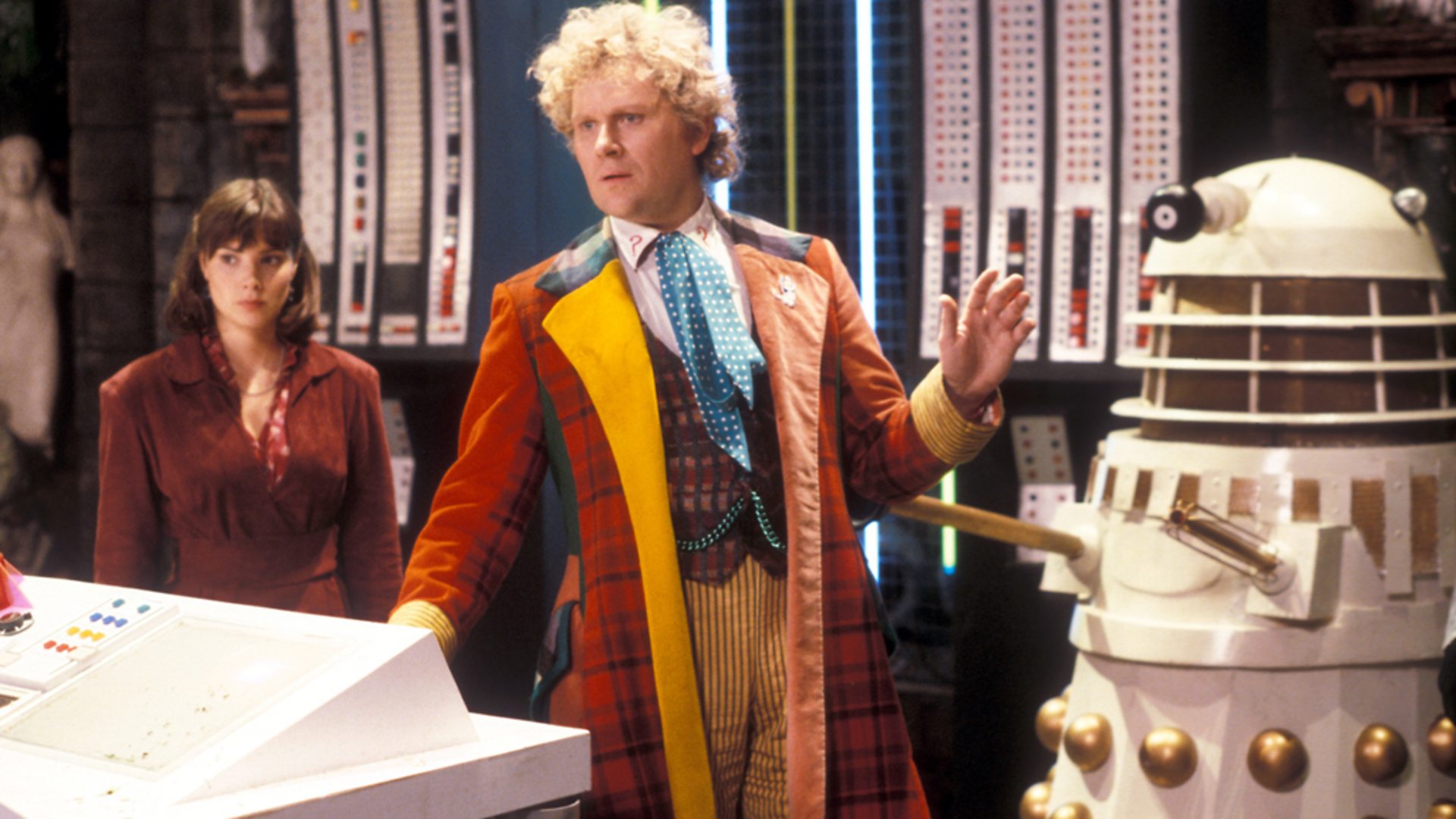 (Photo: BBC)
(Photo: BBC)
In 1985, Davros was back and had the idea to create new Daleks based on the essential design of the old Daleks, but with a more upmarket color scheme (plus a slightly thinner frame). So out went the dour grey and in came the cream and gold, making them look less like interplanetary invaders and more like a Fabergé drinks cabinet for wealthy nerd families. Maybe that’s how he got the funding…
Special Weapons Dalek
 (Photo: BBC)
(Photo: BBC)
Imagine if a Dalek designed and built a Dalek. What design modifications would it have? A lack of concern for fancy paintwork, perhaps? Heavy welding scars across its fuselage? A massive gun and very little else? Yep, that’s who this fella is.
Time War Daleks
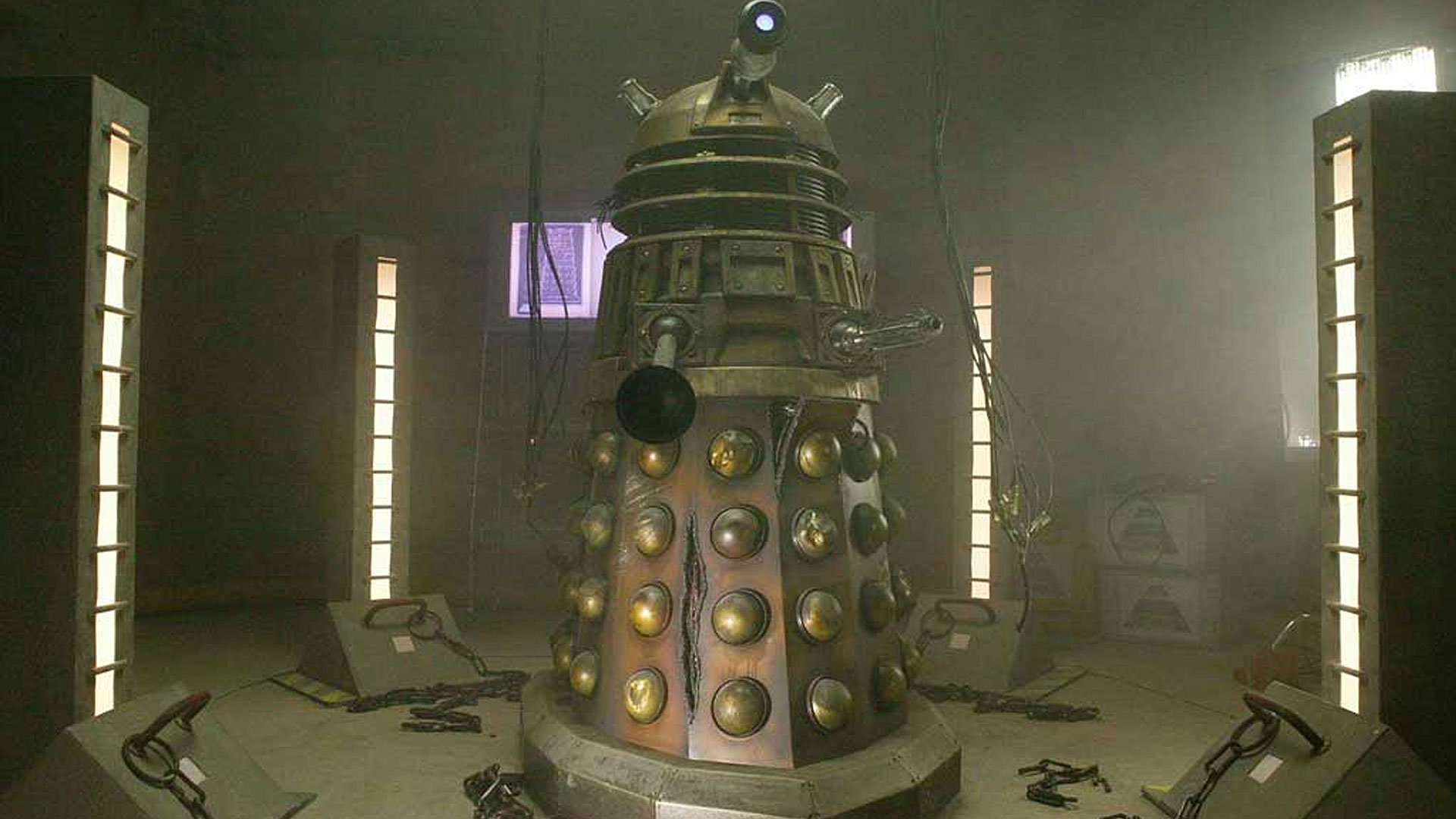 (Photo: BBC)
(Photo: BBC)
The return of Doctor Who in 2005 led to a reassessment of what Daleks are for. “Dalek” cast them as the near victors in an appalling Time War, would-be destroyers of the Time Lords, and near conquerors of all of reality. They had to look like they were less bothered about their paintwork than their ultimate victory over everything, and they did. Even the extended eye lanterns and the blue light at the end of the eyestalk suggested that these were a new breed who demanded fear and respect. A lone Time War Dalek was enough to make the Ninth Doctor lose his cool. A whole army cost him his regeneration.
Dalek Royalty
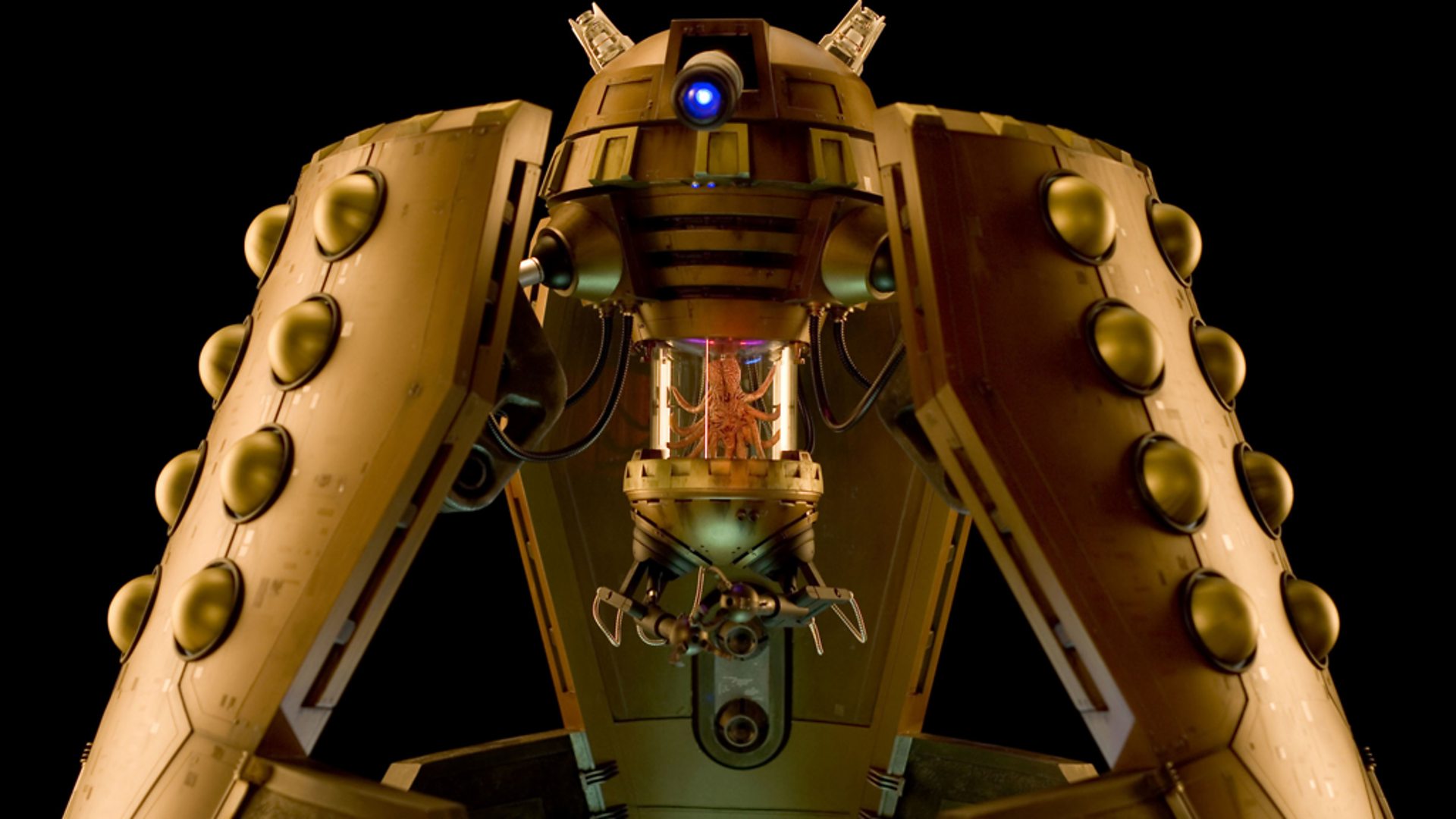 (Photo: BBC)
(Photo: BBC)
Daleks make life difficult for their superiors. The Emperor Dalek (above) may command ultimate compliance, but he’d be no good at hand-to-hand combat. The Dalek Emperor from “The Evil of the Daleks” was attached to a dozen feeding tubes (and therefore immobile). Davros once hid inside the shell of an Imperial Dalek Emperor which looked like a huge soccer ball, and the Supreme Dalek looks like he’s wearing a neck brace. Dalek promotion isn’t for the faint of heart.
Jammie Dodger Daleks
 (Photo: BBC)
(Photo: BBC)
OK, OK, so they’re really called New Paradigm Daleks, but that name is kind of dreary for these sparkling bright beasts. Plus the Doctor almost defeated them using a Jammie Dodger, so that’s the name we’re going with. These Daleks are taller, more hunchbacked and more colorful than any previous version. While the Time War Daleks looked like their dents and scrapes had been hammered out by blacksmiths, this lot looked like they always carried a store of replacement plastic parts in a nearby cupboard, should they bump into each other on the way to the door.
The Self-Built Dalek
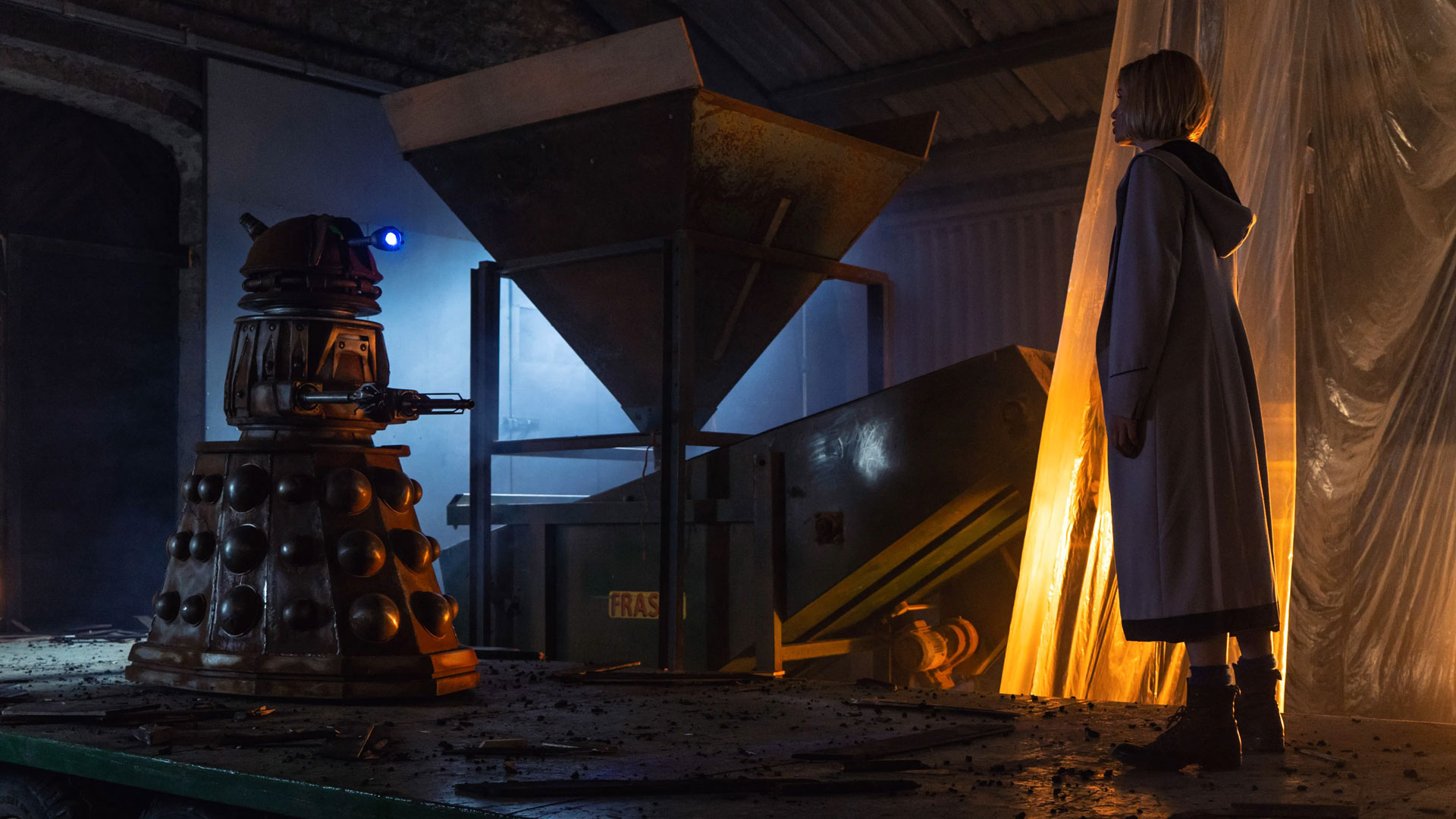 (Photo: BBC)
(Photo: BBC)
Speaking of blacksmiths, this is the shell a Dalek makes when it only has a junk yard of spare parts to work with, and very little time. The wide base is there, as are the familiar flashing 'eyes' and blue vision, but this is a machine built for a single purpose – to survive and conquer – so it’s a thin and spare version of what a Dalek can be when he’s with his mates. The plunger is a claw, the balls in its skirt are a cover for hidden missiles, and the whole head flashes when it talks. And while Twelve may have referred to his old Dalek friend as “Rusty,” this is the Dalek that can truly lay claim to that name.
Which Dalek design is your reigning favorite?